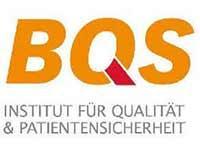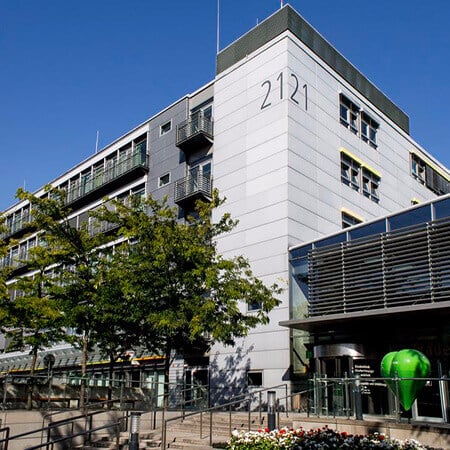A renal artery aneurysm is an enlargement of a blood vessel. It can lead to such serious complications as uncontrolled arterial hypertension, thromboembolism, possible rupture of an aneurysm with severe bleeding. This is a rare disease. According to autopsy data, such aneurysms are found in 1 out of 10 thousand people.
Content
- Causes
- Types of aneurysms
- Symptoms
- Surgical treatment
- Endovascular treatment
- Why is it worth undergoing treatment abroad?
Causes
The main causes of renal artery aneurysm are:
1. Atherosclerosis. The condition is characterized by degeneration of the vascular wall. It becomes weakened and dilated. The patient usually has numerous concomitant cardiovascular pathologies.
2. Fibromuscular dysplasia. This is a disease of unknown origin. It is characterized by weakening of the vessels of non-inflammatory and non-atherosclerotic genesis. In every third patient, the condition also affects other arteries: carotid, intracranial, intra-abdominal, external iliac.
Rare causes of aneurysm:
- Recklinghausen's disease.
- Ehlers-Danlos syndrome.
- Polyarteritis nodosa.
- Injuries.
- Medical manipulations (biopsy, nephrostomy).
The risk of developing the disease is higher in pregnant women. The reason for the formation of an aneurysm is an increase in pressure in the abdominal cavity due to an enlargement of the uterus in the 3rd trimester. In addition, in pregnant women, aneurysms are more likely to rupture, and in case of rupture, the risk of death is higher – more than 40%. The fetus dies in 90% of cases.
Types of aneurysms
Depending on the localization, the following types of renal artery aneurysms are distinguished:
- Right renal artery aneurysm.
- Left renal artery aneurysm.
They can be either single or multiple. Multiple renal artery aneurysms usually develop due to genetic syndromes.
According to the structure, aneurysms can be:
- Saccular aneurysms (the most common ones – they account for 80% of cases).
- Fusiform aneurysms.
- Dissecting aneurysms.
Most often, aneurysms develop in the area of the bifurcation of the renal artery. They are usually small, but in 30% of cases, the diameter exceeds 1 cm.
Symptoms
Renal artery aneurysm causes no symptoms. In most cases, it is diagnosed by accident when imaging the abdominal aorta and its branches.
The disease leads to an increase in blood pressure. When a doctor is listening to the lateral parts of the abdomen with a phonendoscope, noise can be heard.
Surgical treatment
Most aneurysms can be treated with an operation. Vascular dilatations with a diameter of more than 2 cm are especially dangerous. Medical observation is possible with a diameter of up to 1.5 cm. In most patients, the aneurysms do not enlarge or rupture.
Surgical treatment options:
- Renal artery prosthetic repair.
- Resection of aneurysm with prosthetic repair and reanastomosis ("reconnection") of the renal artery.
- Aneurysm elimination with shunting of the renal artery or its branches (the renal artery is closed, and a bypass of blood flow is formed instead).
- Aneurysm resection with anastomosis of the artery with unpaired visceral arteries.
- Complex reconstructions using the patient's own vein or a segment of the internal iliac artery.
The operation is usually performed through a large incision in the skin. Some hospitals use laparoscopy.
With local infarction, a single-stage resection (partial removal) of the kidney can be occasionally performed. In case of nephrosclerosis, nephrectomy (removal of the kidney) can become an option of choice.
Endovascular treatment
Endovascular treatment does not require large skin incisions. The doctor makes a small incision in the leg and inserts a catheter through it. He reaches the renal arteries and performs the necessary manipulations.
For an aneurysm to rupture, it must be eliminated from the bloodstream in one way or another. For saccular aneurysms with a narrow neck, coil embolization is often used. The aneurysm is a sac. Coils are inserted inside it, which initiate the formation of blood clots. As a result, the sac fills with a thrombus and blood flow through it stops.
Saccular aneurysms can be treated with stent-assisted coil embolization. In some hospitals abroad, balloon-assisted coil embolization and embolization with liquid embolizing agents can be used.
Another method of treatment is stenting with a stent graft. It is a mesh cylinder that acts as a scaffold for the blood vessel, preventing it from rupturing. But stents are usually placed if the aneurysm is located outside the area of the bifurcation, and this is only 40% of cases. In addition, they do not fit into convoluted or narrow vessels.
Why is it worth undergoing treatment abroad?
For the treatment to be safe, minimally traumatic and reliable, you can travel abroad. The hospitals in developed countries employ world-renowned doctors. They use the latest technology and advanced equipment.
There are several reasons why it is worth undergoing renal artery aneurysm treatment abroad:
- Accurate diagnosis will help to find out the cause of the aneurysm, assess the condition of other blood vessels, and perfectly plan treatment.
- Minimally invasive procedures are used to treat the disease: angioplasty, stenting, aneurysm embolization.
- Endovascular treatment can be performed in most patients, including those with tortuous vessels, a wide neck of the aneurysm, if it is located in the bifurcation area.
- If surgical treatment is required, then it can be performed using a minimally invasive laparoscopic method.
- Simultaneous treatment of concomitant pathologies of the heart and blood vessels, which are often diagnosed in patients with renal artery aneurysm.
To undergo renal artery aneurysm treatment abroad, please use the services of Booking Health. We will select the best clinics for the treatment of aneurysm abroad for you and take care of the organization of your trip. On the Booking Health website, you can compare prices and book a medical care program at an affordable price. Due to the lack of additional coefficients for foreign patients, the cost of treatment for you will be lower.
Authors:
The article was edited by medical experts, board certified doctors Dr. Vadim Zhiliuk and Dr. Sergey Pashchenko. For the treatment of the conditions referred to in the article, you must consult a doctor; the information in the article is not intended for self-medication!
Sources:
MedicineNet
NHS
Verywell Health




















